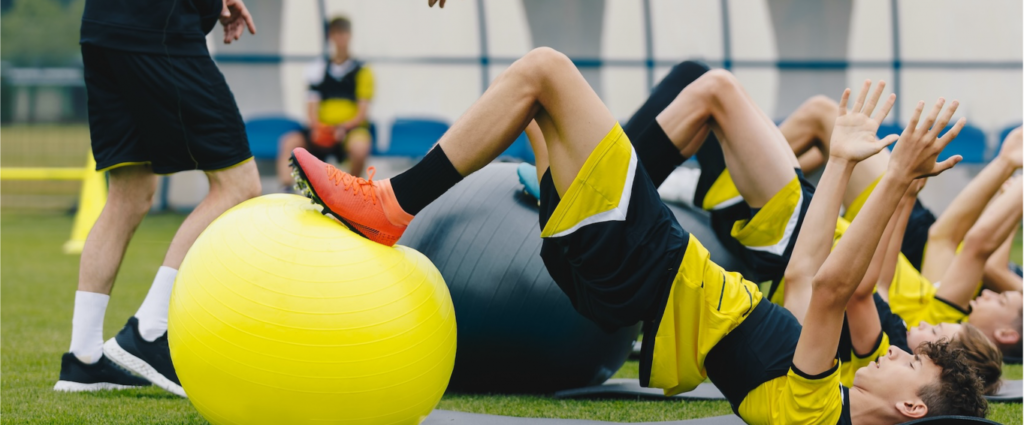Building Core Stability for Better Performance

Absolutely! Here’s a compelling and informative article for your sports care website on:
🧱 Building Core Stability for Better Performance
Ask any coach or physical therapist what separates good athletes from great ones, and “core stability” will almost always come up. Why? Because a strong, stable core is the foundation for almost every movement in sports—from sprinting and jumping to twisting, turning, and changing direction.
Whether you’re an elite competitor or just love staying active, improving core stability can take your performance to the next level and drastically reduce your risk of injury.
Let’s dive into why core stability matters and how to train it the right way.
🧠 What Is Core Stability?
Core stability is the ability to control the position and movement of your trunk (torso) so the rest of your body can move efficiently. It’s not just about having visible abs—it’s about training deep, stabilizing muscles that support your spine and pelvis.
💪 The Core Includes:
- Rectus abdominis (the “six-pack”)
- Transverse abdominis (deep abdominal wall)
- Obliques (sides of your trunk)
- Erector spinae (lower back muscles)
- Multifidus, pelvic floor, diaphragm, and glutes
⚡ Why Core Stability Matters for Athletes
A strong, stable core can help you:
- Generate more power in your movements (throws, jumps, sprints)
- Maintain balance and control under pressure
- Improve agility and directional changes
- Prevent lower back pain and overuse injuries
- Protect the spine during heavy lifts or high-impact play
In short: Core stability boosts performance and keeps you injury-free.
🏋️♀️ Core Stability vs. Core Strength
Core strength = the ability to produce force
Core stability = the ability to resist movement and maintain control
You need both, but stability is the unsung hero of athletic performance. It’s what helps you stay solid during a tackle, land softly after a jump, or maintain posture in a sprint.
🔑 Top Core Stability Exercises (No Crunches Needed)
Here are some of the most effective, sport-specific core stability exercises:
1. Planks (and Variations)
- Why: Teaches total-body tension and anti-extension control
- Try: Forearm plank, side plank, plank with shoulder taps
2. Dead Bugs
- Why: Builds coordination between limbs and deep core
- Focus on slow, controlled movement—no arching your back
3. Bird Dogs
- Why: Promotes spinal alignment and cross-body stability
- Add a pause at the top for extra challenge
4. Pallof Press
- Why: Trains anti-rotation strength (key for athletes)
- Use a cable or resistance band, press away from your body slowly
5. Glute Bridges
- Why: Strengthens the posterior chain and stabilizes hips
- Add marching or single-leg variations for core demand
🧱 How to Build a Core Stability Routine
🔄 Frequency:
2–3x per week, 15–20 minutes per session
🧭 Sample Core Stability Circuit:
| Exercise | Time/Reps |
|---|---|
| Forearm Plank | 3 sets x 30 sec |
| Bird Dogs | 2 sets x 10/side |
| Dead Bugs | 2 sets x 10 reps |
| Pallof Press | 3 sets x 8/side |
| Glute Bridge March | 2 sets x 10 reps |
Keep movements slow, controlled, and precise—this isn’t about speed or heavy loads.
❗ Common Mistakes to Avoid
- Relying on crunches alone for “core work”
- Rushing through reps without control
- Neglecting the lower back and glutes
- Holding your breath (breathe through the movement!)
🏁 Final Thoughts
Your core is your center of gravity—it connects your upper and lower body, powers your movements, and protects you from injury. Building true core stability will not only make you a better athlete—it will help you move with more power, control, and confidence in everything you do.
Train your core to move better, not just to look better.
Want a sport-specific core program? Our performance coaches and therapists can customize one for you based on your goals, injury history, and position or activity.
Would you like me to add downloadable exercise guides, video demos, or SEO-optimized content blocks for this article?

Post Comment